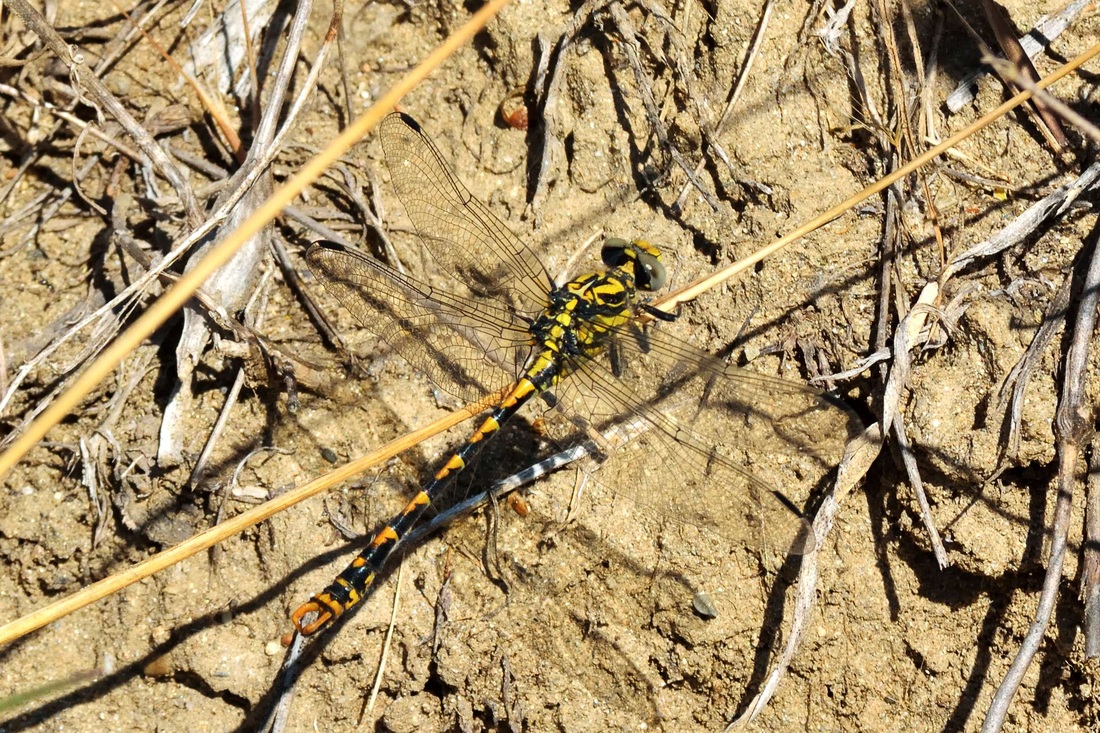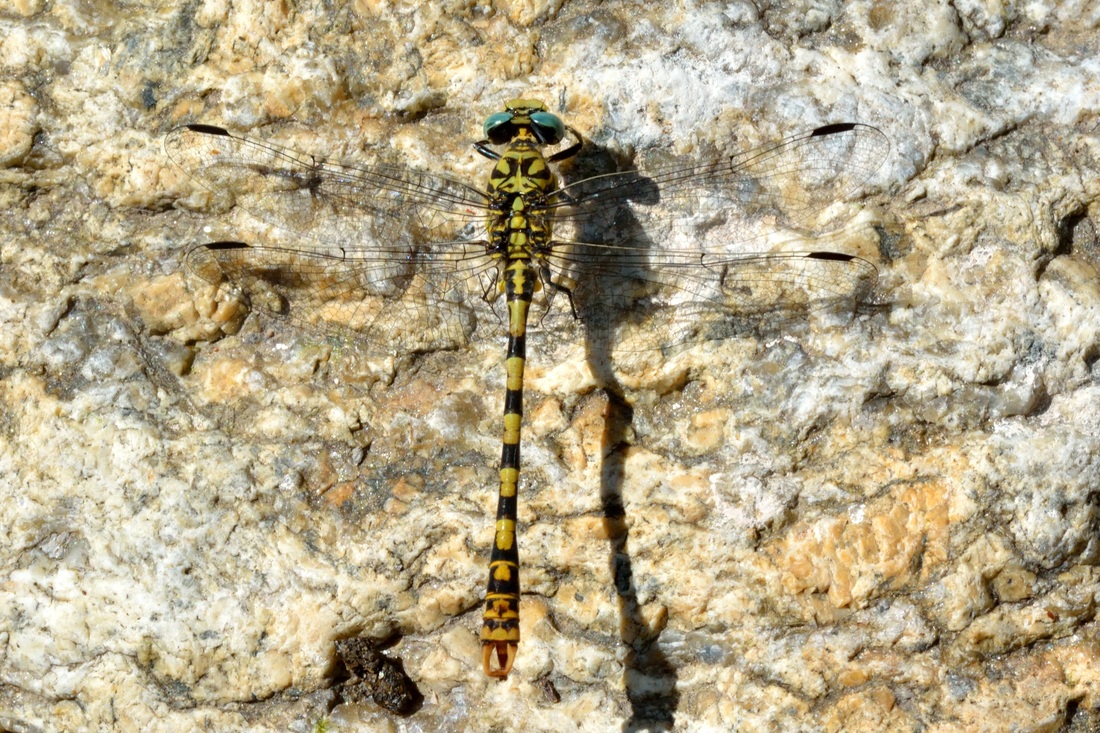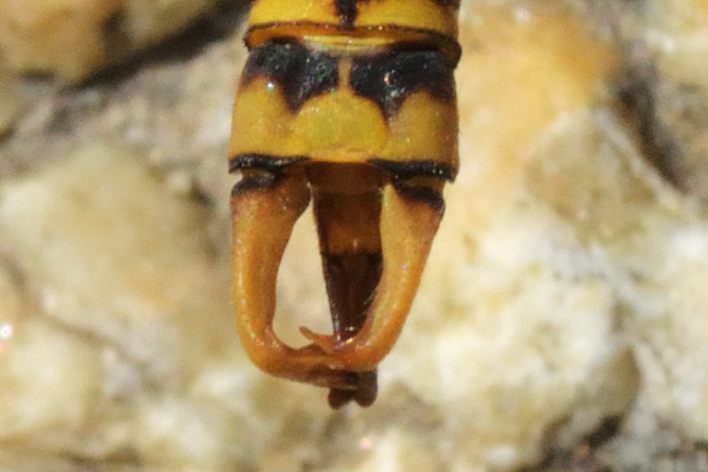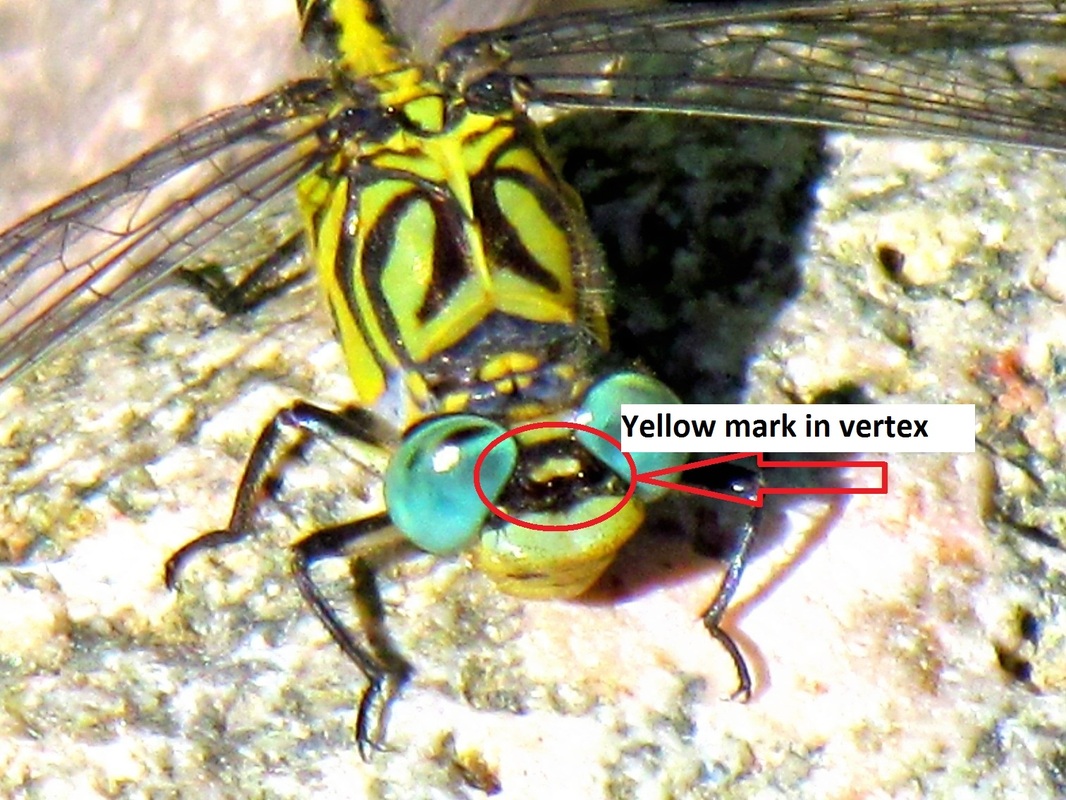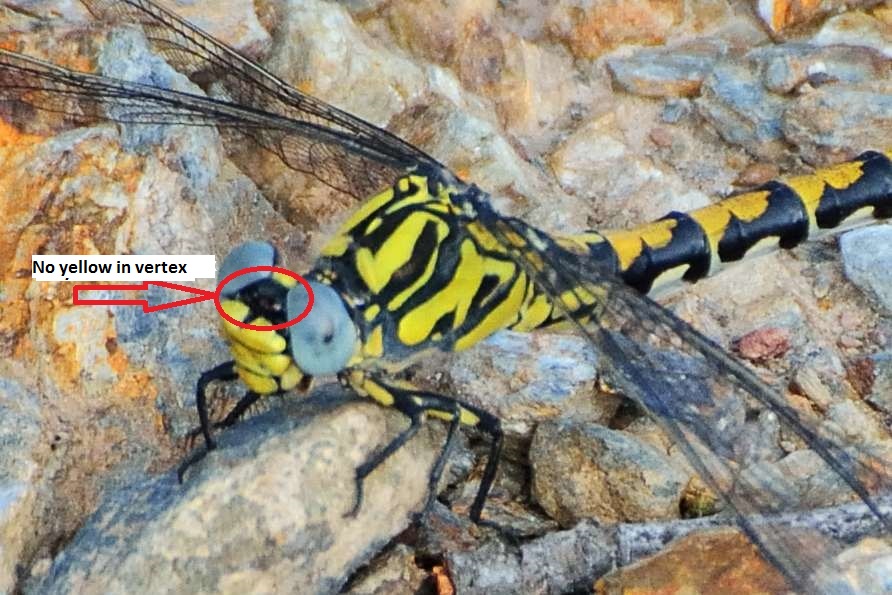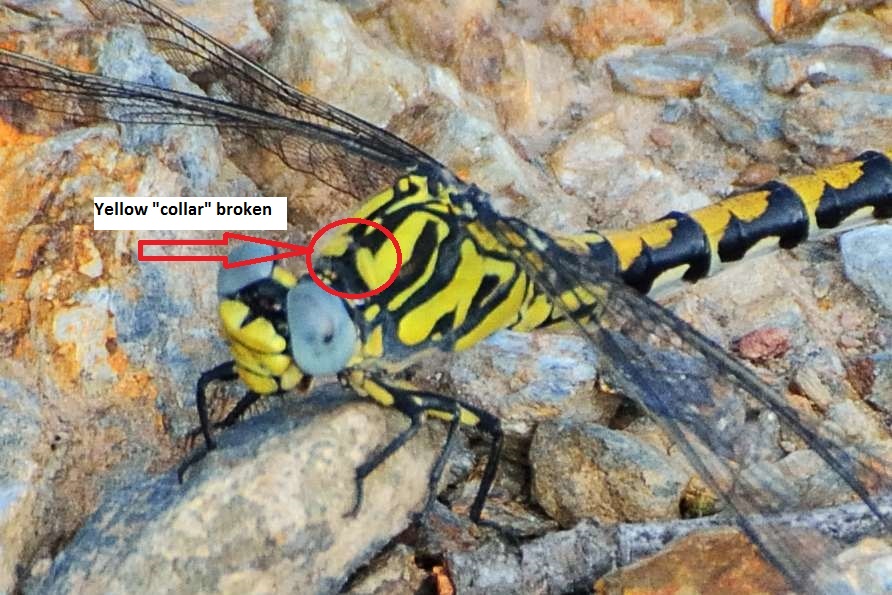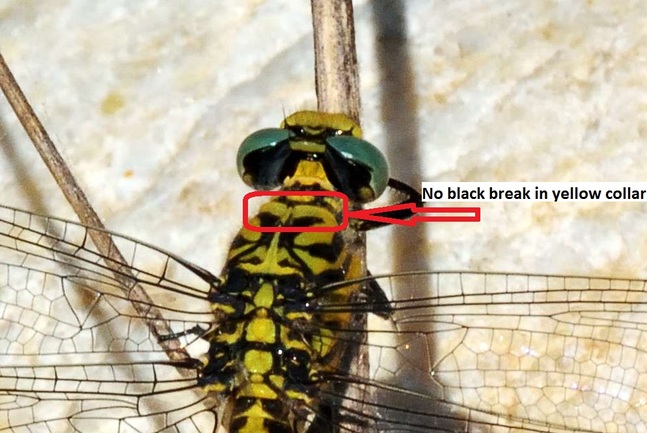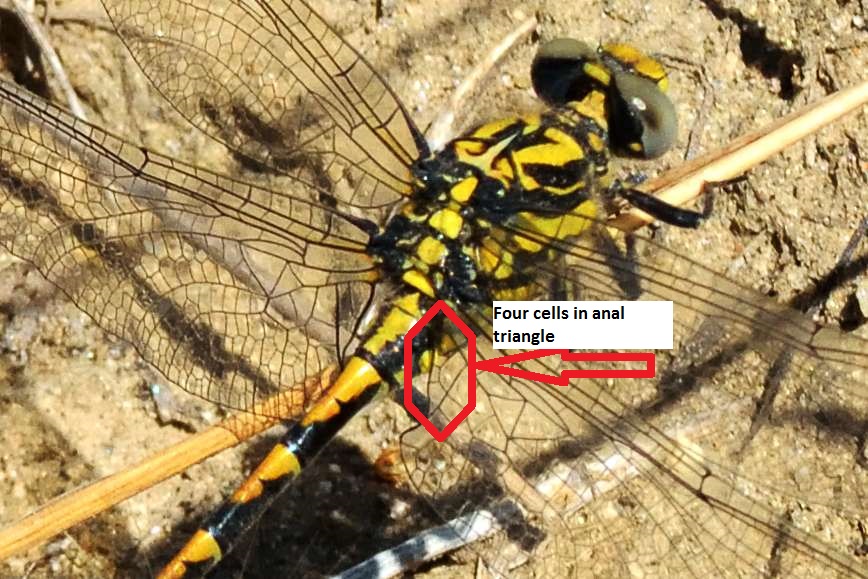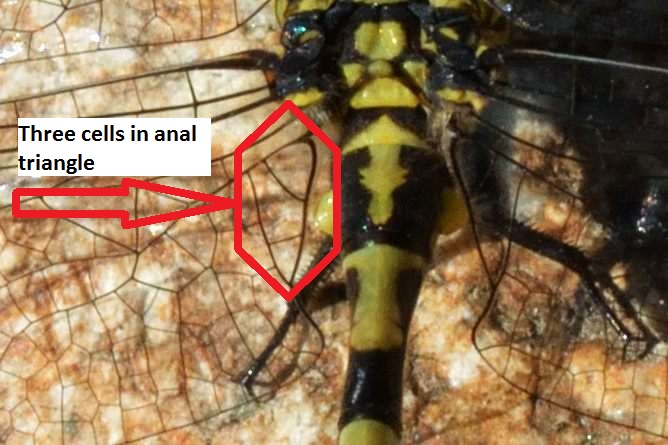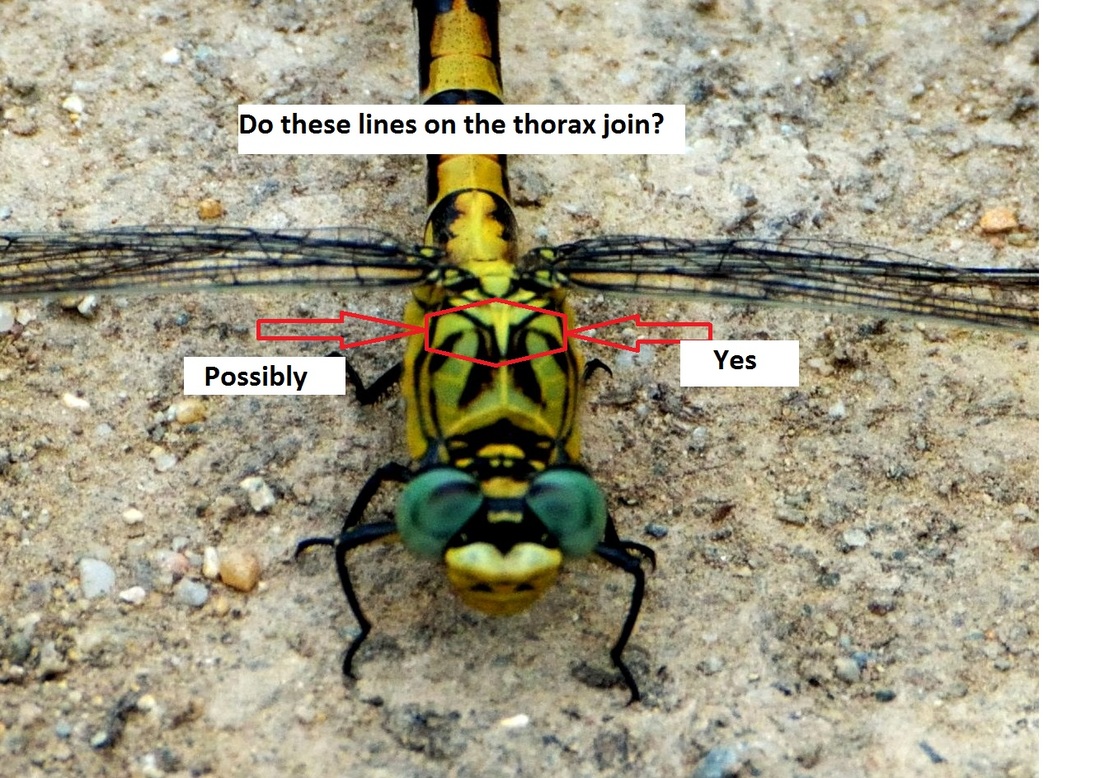My first interest in dragonflies came from their often vivid colours, and the sheer difficulty of photographing them in their swiftly-moving, jerking flight patterns. They are one of the very few animals that can fly up, down, backwards, forwards and sideways.
I have become fascinated by the sheer difficulty of distinguishing one species of dragonfly from another. Despite helpful pictures in many books, it can often be hard to make a good and accurate ID.
In an earlier blog "Oh! So Similar" I talked about the way that many dragonflies at first seem to look so alike. Now I am going to look at two species of dragonfly that are very like each other and show what I feel are good ways of telling them apart. The species is Pincertails (Onychogomphus in Latin).
This commentary covers only Pincertails found in the Mediterranean area of S. France that lies at the foot of Les Albères in the Pyrenees, near the river Tech.
There are two species of Pincertail (Onychogomphus) in this area - Large and Small Pincertails. They are called Pincertails because of the eye-wateringly substantial male appendages; these are used during copulation by the male to grasp the female. Telling the difference between Large and Small can be tricky as the overall sizes of the two are not all that different.
The Small Pincertail has three subspecies, of which only one is found in this area (Onychogomphus forcipatus ssp. unguiculatus). All O. forcipatus pictures in this blog are of the subspecies.
In telling the difference between Large and Small there are three (fairly) visible markings which are usually straightforward to identify and are diagnostic.
Starting at the front with the first of these diagnostic markings -
In the Small Pincertail (O. forcipatus) the vertex - the black area between the eyes - has got a small yellow mark.
Both species have a yellow collar at the front of the thorax (not always easy to see). In the Large Pincertail this is broken by a black bar.
In the back wing, both species have got a triangular area close to the body at the rear of the wing called the anal triangle.
In the case of the Large Pincertail male this triangle contains four cells...
In the case of the Small Pincertail below there are two curving black lines running front to back on each side of the top of the thorax; these should be joined about half way along by another curving black line. On one side the line clearly joins but on the other not very clearly.
In the case of many dragonflies there tend to be different English names for each species. These vernacular names need to be as user-friendly as possible. The names proposed in a classic reference work by Klass-Douwe Dijkstra (K-DD) - "Field Guide to the Dragonflies of Britain and Europe"- are becoming widely preferred, mainly because they are more descriptive. The British Dragonfly Society (BDS) names can have a more regional focus.
For example the Small Pincertail (K-DD) is also called Green-eyed Hooktail (BDS); in our area these have blue eyes (a Mediterranean trait, see photo above), and the name Hooktail is less descriptive than Pincertail.
Elsewhere in the world (e.g. USA) names can yet again be different. There is a need to standardise international names for European species, and currently we are seeing polarisation rather than consensus.
The definitive name is always the Latin one. Even so, this is not always clear as there is discussion on which species a dragonfly belongs to (especially in the case of sub-species - is it a variant of an existing species, or an evolving/evolved new species).
Dijkstra BDS French Latin
Pincertails Hooktails Gomphidé Onychogomphus
Large Pincertail Blue-eyed Hooktail Le Gomphe à Crochets Onychogomphus uncatus
Small Pincertail Green-eyed Hooktail Le Gomphe à Pinces Onychogomphus forcipatus
Challenging photography....
It is quite clear that making a good ID requires detailed observation. Many of the details are not possible to see without first catching the insect, either because what you want to see is very small or just hidden away from view. I never catch dragonflies; my wish is to leave them as undisturbed as possible. This means that I rely on photographs.
The trick is knowing which anatomical parts of which species require detailed photos - and then getting into a position where one can get the shot. Even the most approachable of insects will tolerate only a limited amount of photographic time, and there are many which are either very shy or on the wing most of the time. Bearing in mind that the feature one is trying to photo may be only a fraction of a millimetre in size, awkward to view and obscured by foliage, and one can understand how challenging it is!
To come....
The next blog in this series will be looking in detail at a small and dainty damselfly - the Featherleg (Platycnemis). There are three species of Featherleg in our area, but two of them are really difficult to sort out - especially the females.
A further blog will look at the habitats these delightful creatures live in, how difficult it can be to get the "right" photos and ways to tackle the problem.
